How the Atmos clock functions
The ATMOS from Jaeger-LeCoultre is a unique mechanical clock. This pendulum clock has been available for purchase since the early 1930s and is still sold today—almost identical in construction—by JLC.
The ATMOS clock uses the smallest temperature fluctuations to continuously generate energy and maintain a power reserve.
Behind the extremely smooth-running movement is a hermetically sealed pressure can filled with ethyl chloride, which reacts extremely sensitively to temperature fluctuations and thus generates movement via a metal bellows: if the temperature rises, the gas in the pressure can expands and vice versa. This pressure difference drives a mechanism that in turn winds the clock. A temperature change of just one degree can generate enough energy to keep the clock going for two days. The clock therefore does not need to be wound by hand and will run almost indefinitely as long as it is exposed to the natural fluctuations of the ambient temperature.
Jaeger-LeCoultre’s ATMOS is not only a technical jewel, but also an aesthetic one. It combines traditional craftsmanship and innovative technology to create a timepiece that measures time naturally and delights clock lovers around the world.
History of the Atmos clock
The following is an overview of the evolution of the Atmos clock. Since its invention in 1928, the legendary Atmos clock from Jaeger-LeCoultre has been redesigned again and again. Its special feature: an almost “eternal movement“ that is powered by the breath of the world. It has always been a dream of watchmaking to construct a clock that requires no external forces to run—a perpetual motion machine, so to speak. The trick: a hermetically sealed capsule—the so-called pressure box—reacts to temperature fluctuations and thus winds the watch—without human intervention. The very delicate movement, which is designed to be extremely efficient, can thus run for many decades. A temperature fluctuation of just one degree Celsius is enough to keep the watch running for 48 hours. A masterpiece of engineering! In the following, we will try to take up the history of the models and go into the technical differences as well as the aesthetically timeless combination of classic and modern. I hope you enjoy getting to know and exploring the different calibers and variations…

Atmos I
In 1930 the production of the first Reutter watches started, the forerunners of the Atmos watch. There were about 24 different models from 1932–34, the first Reutter watches were still equipped with the “Cluses“ movement—with only 4 rubies, the rest of the pivots were steel. From 1932/33 on, a new movement caliber 30′‘A was used, equipped with 15 rubies. However, the main difference from the later Atmos watch was mainly the mercury-based motor, which transmitted the temperature fluctuations of the atmosphere to the mainspring barrel. From 1936, development began on a new motor principle, as the dangers of mercury became known and the motor construct was very fragile, therefore difficult to transport.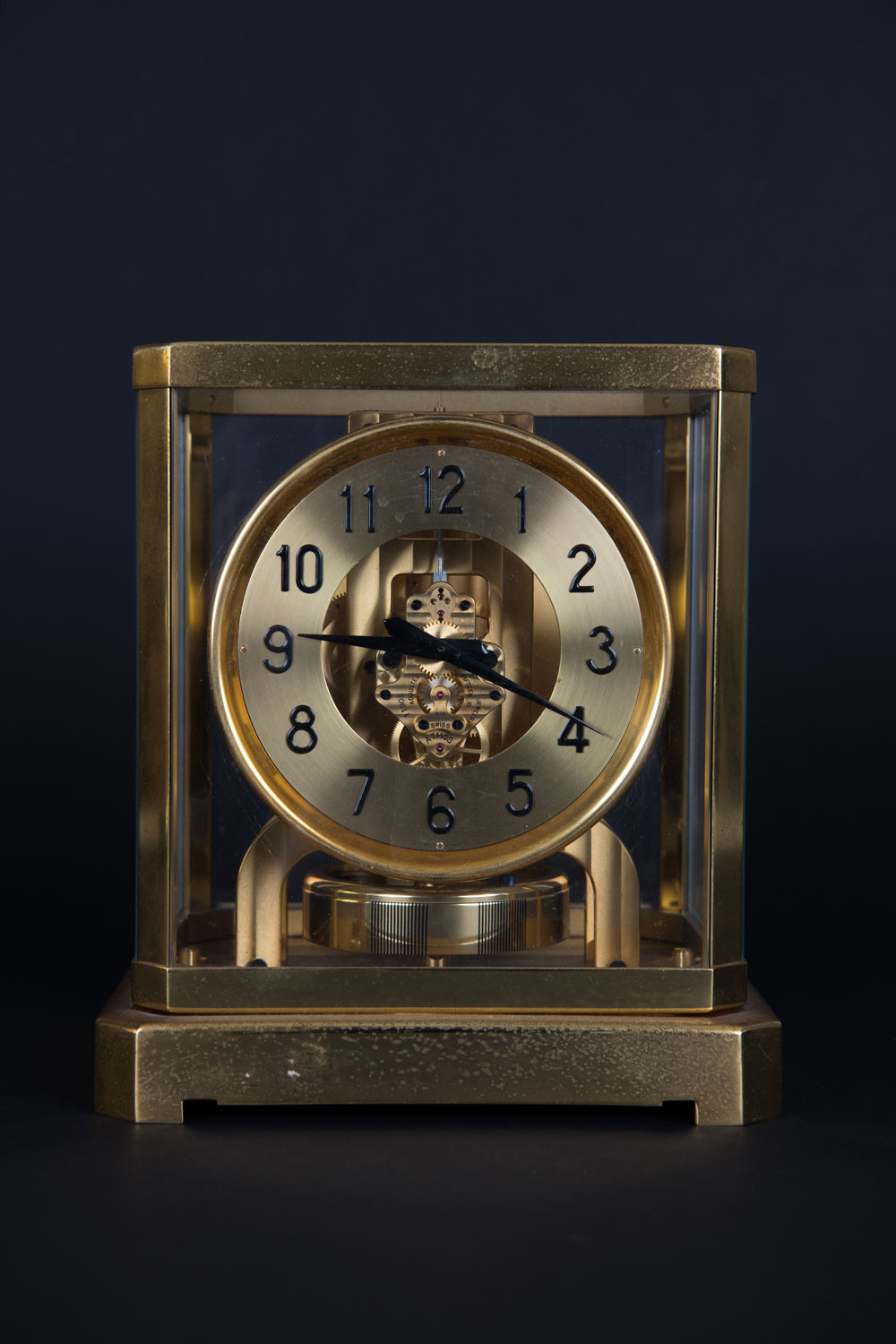
ATMOS II
The first “real“ Atmos clock, powered by a gas-filled metal bellow, was developed in 1935–38. The movement was further developed and a new case with glass discs was designed. The typical design, which remained until the early 1990s, was created. Over the years, there were minor changes to the design, such as the adjustment knob which points backwards to the pressure box, or forwards, towards the dial. The plate shows the Geneva finish, which is still common today. The Atmos II was sold from 1939 on and went into serial production for the first time. The myth of the perpetual motion machine was created.
ATMOS III
With the caliber 519, further minor changes were made. The fine adjustment was revised and placed centrally at the front over the dial, the plate width is reduced and the construction of the case is somewhat simplified—overall, the watch becomes more suitable for mass production. The movement remains mostly unchanged. The number of watches produced increased from 2,000 in 1948 to 10,000 by 1951.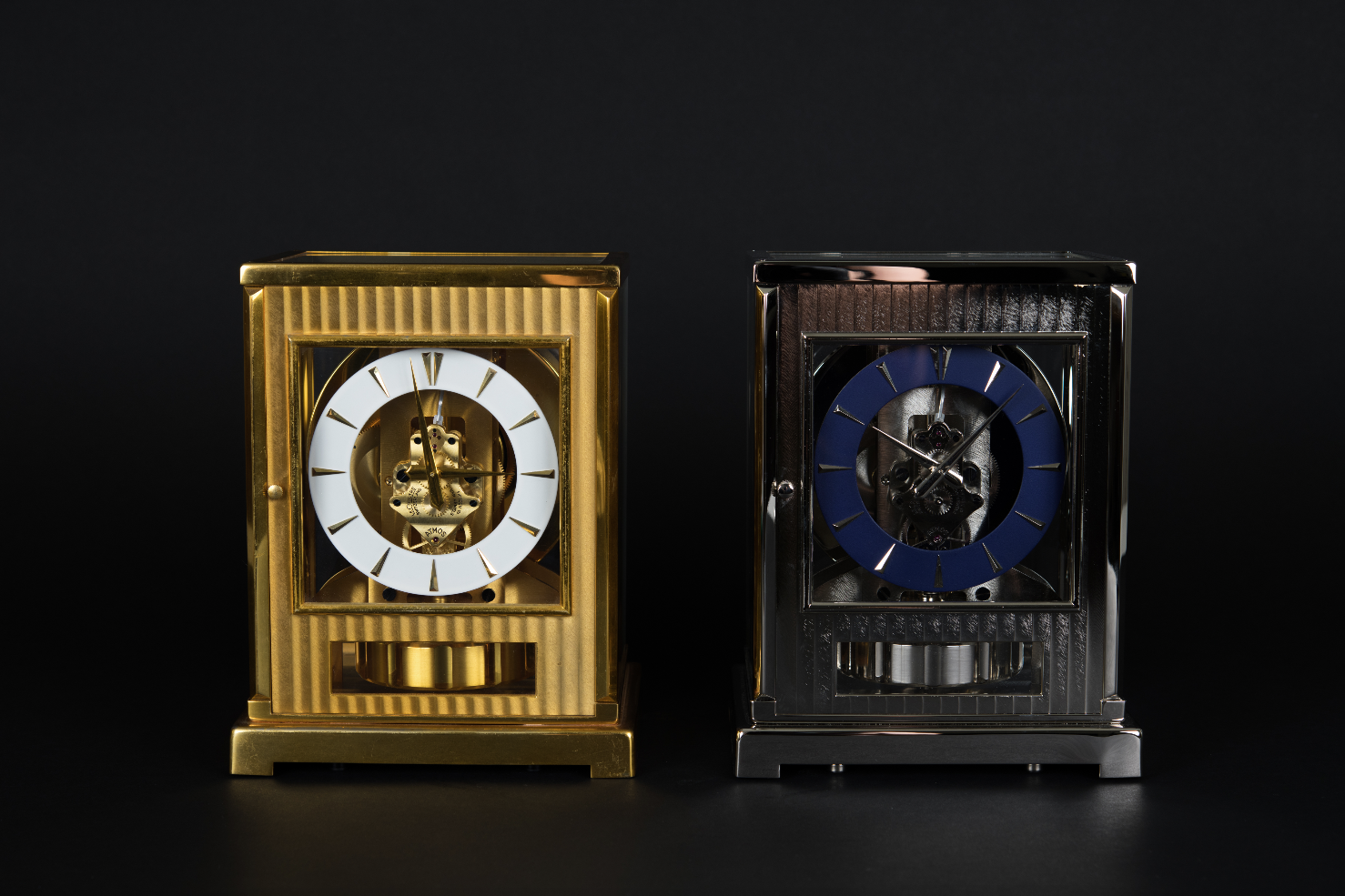
Special series ATMOS IV
The caliber 522 and 532 were special models that were produced only briefly and are considered intermediate models. Today, the caliber 522 is often called “Tuxedo“ because of the prominent front door, which is decorated with the striking Geneva cut. The caliber 532 differs only slightly from the caliber 526, here the case front was reinterpreted and given a new design. This model was produced only in small numbers.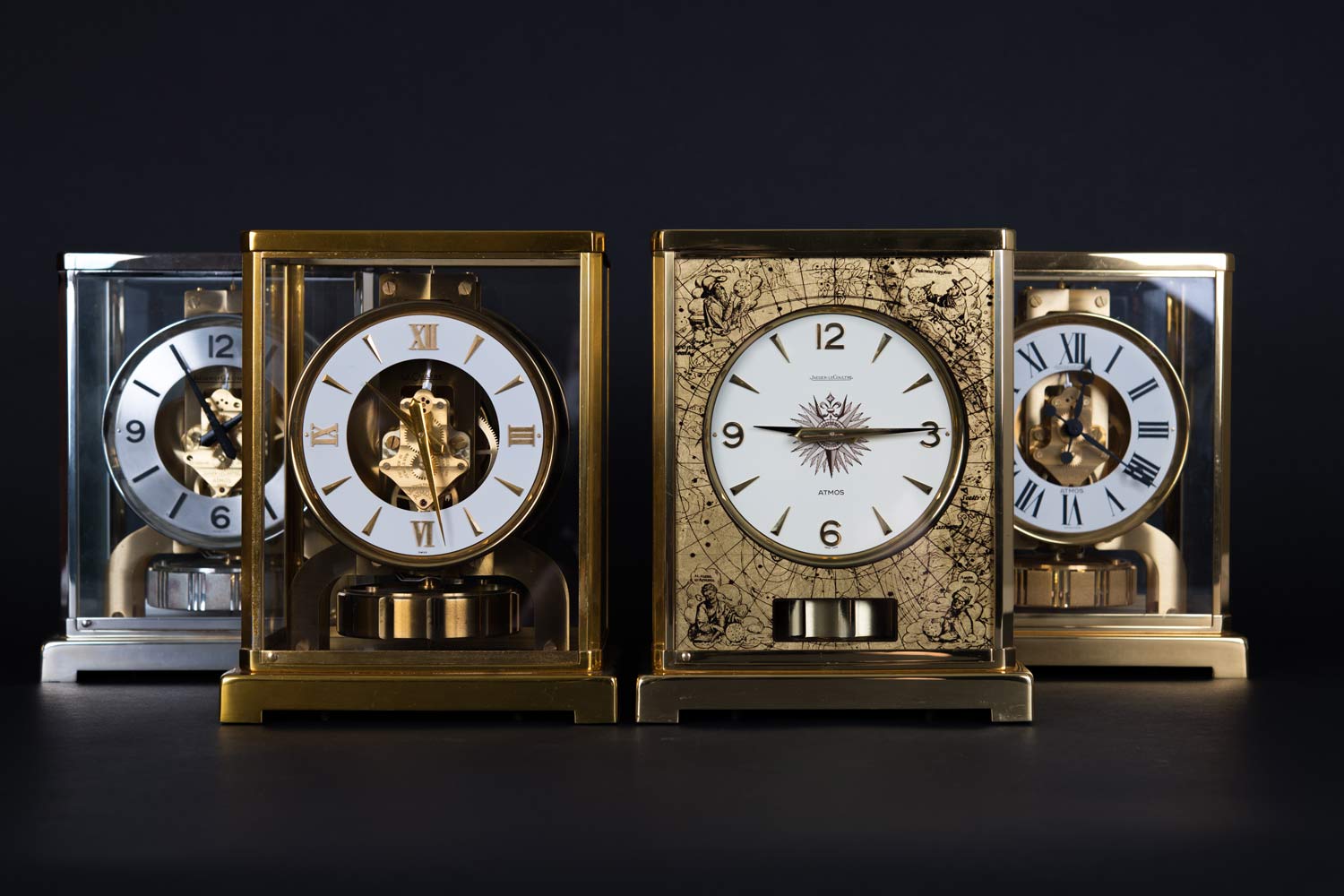
Atmos V
The serial production of the Atmos clock continues with the caliber 526. The construction of a new movement allows the production of 1,500 Atmos clocks per month, the clock is presented in Switzerland as a state gift, in the U.S. very often as a corporate gift for employees to celebrate an anniversary. Therefore, this model is also often found engraved or with a glued plaque on the front. Above mentioned caliber 519 and 522 are produced in parallel and, however, are in discontinuation. The caliber 526 itself differs mainly by smaller dimensions, which also gives it the nickname “Baby Atmos“. The case was modified, the pendulum latch is located inside under the dial—no longer under the case back. Furthermore, the clock no longer has a glass cover, which is removable, but a small door, which can be opened with a gold-plated brass button. The movement is built into this classic watch case, but also in special versions of the coming decades. For example, in the model Atmos Vendome and Atmos Vendome Paris.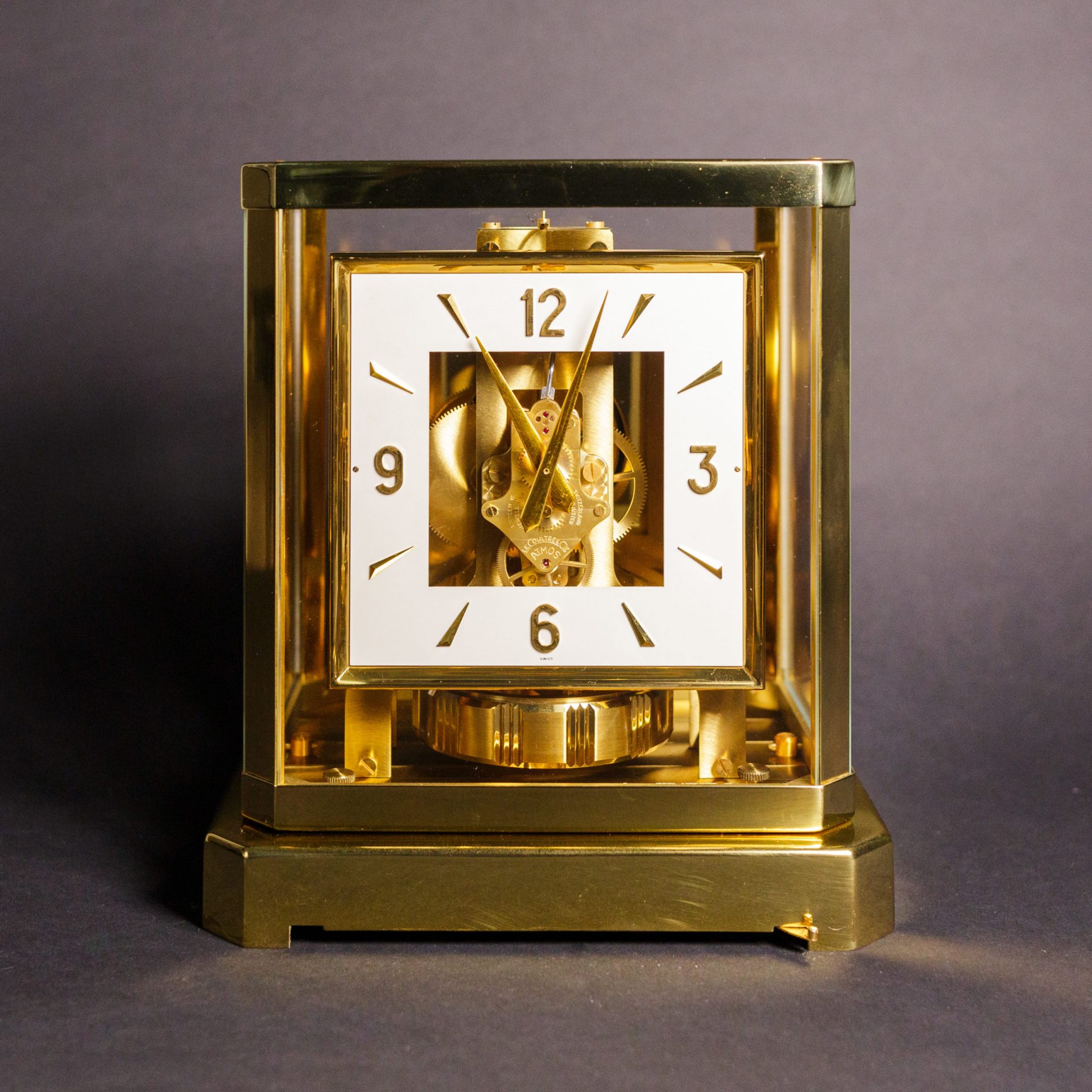
Atmos VI
Here, the larger original model of the Atmos clock is revived. The success of the brand leads to the launch of even more models. The old dimensions are combined with the new advanced movement and slimmer plates. The watch has initially a hood like the Atmos II and Atmos III, which is changed to a front door with a small pusher in the following models from Atmos VIII. Unfortunately, we have no official information about the production period, but our records suggest that this model was produced as early as 1958.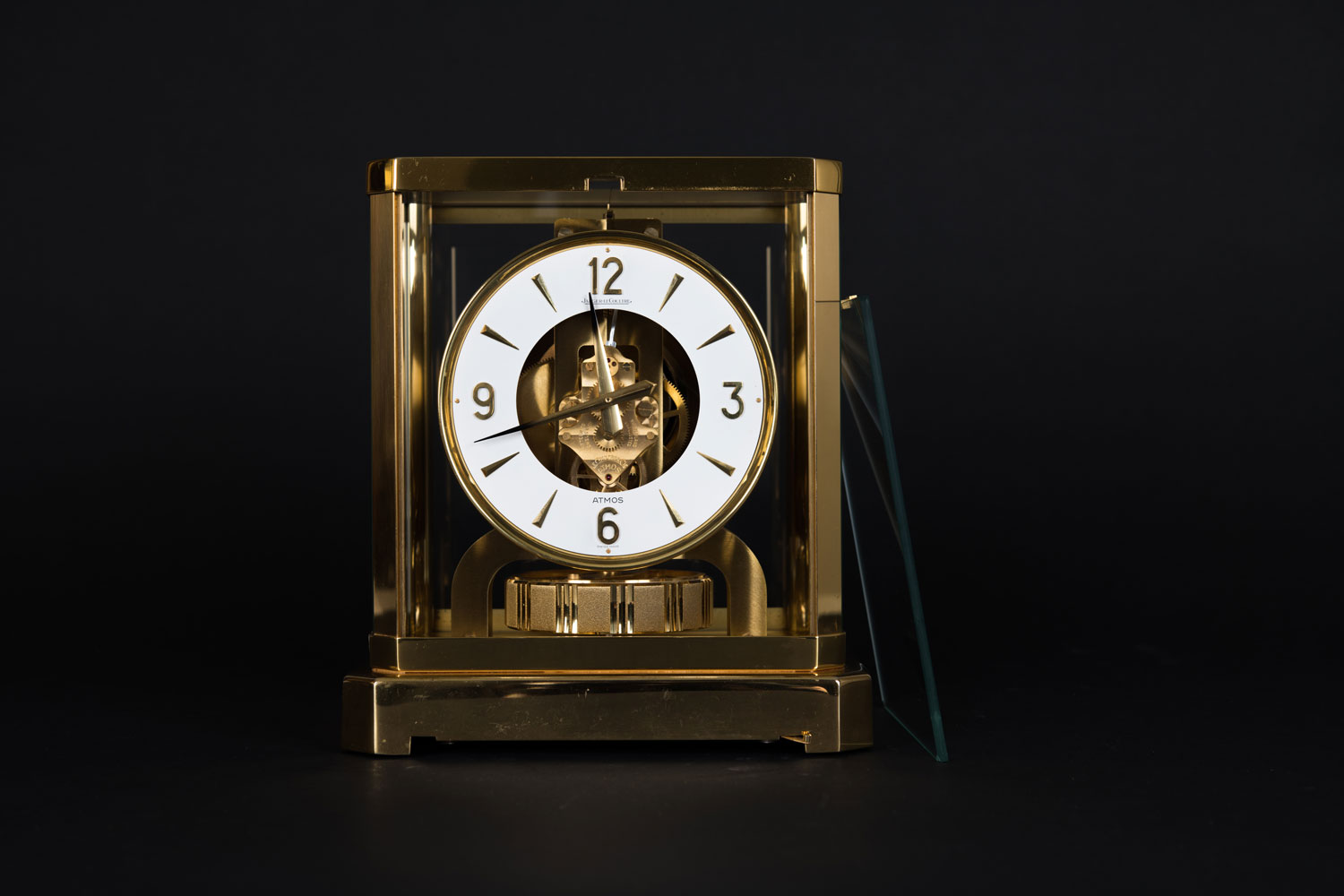
Atmos VIII
Parallel to the above-mentioned calibers, the Atmos VIII, caliber 528/1 is added to the catalogs in 1967. First used in the Embassy model, the caliber becomes the new series production. At first, this model is still sold with a hood (Atmos VI), like the previous variants, later on, it is changed to a front door (Atmos VIII). The case proportions are again larger, the movement can be adjusted and regulated through a removable front dial. Again, there are different dial variants and some special editions like the Atmos “fantasy models“ (designed by Luigi Colani, in catalogs 1974/75). It is said that this caliber is the most built caliber of the Atmos watch until today.
Limited editions
Special mention should be made of various special editions of the Atmos clock, which have been produced again and again in small production runs, mostly for various company anniversaries. These include, for example, the Atmos Jubilee, the Atmos Prestige (and later the Atmos Opera). Marking the fiftieth anniversary of the Atmos clock, contemporary technology is here inserted into the original prototype design of the Reutter watches (1930s). In a limited edition of 1,500 to 3,000 pieces, these models continue to enjoy great popularity today. Especially the detailed design with faceted discs and large screwed balance weights testifies to the flair of the past era.
The redesign of a classic
From 1983, the caliber 540, which had been completely overhauled in design, was listed in the catalogs. The focus was on a slimmer design and modified proportions in detail. Technically, the movement was completely rebuilt: The movement plate, the pendulum suspension, and all gears were completely redesigned. Also, the mainspring barrel was moved and, for the first time, a moon phase was possible—and that without an extra gear! This was the first “complication“ of the Atmos watch, the so-called caliber 544—a milestone. In the beginning, this caliber is also equipped with a temperature and hygrometer. Not visible from the outside, but of great importance: The manufacturing process of the pressure box, the heart of every Atmos clock, was fundamentally revised. The gas-filled metal bellows, which react very sensitively to any change in temperature, have now been manufactured using an industrial plasma welding process, which greatly extends its service life and thus helps the Atmos watch to last even longer. Different models, dials, and caliber variants were introduced.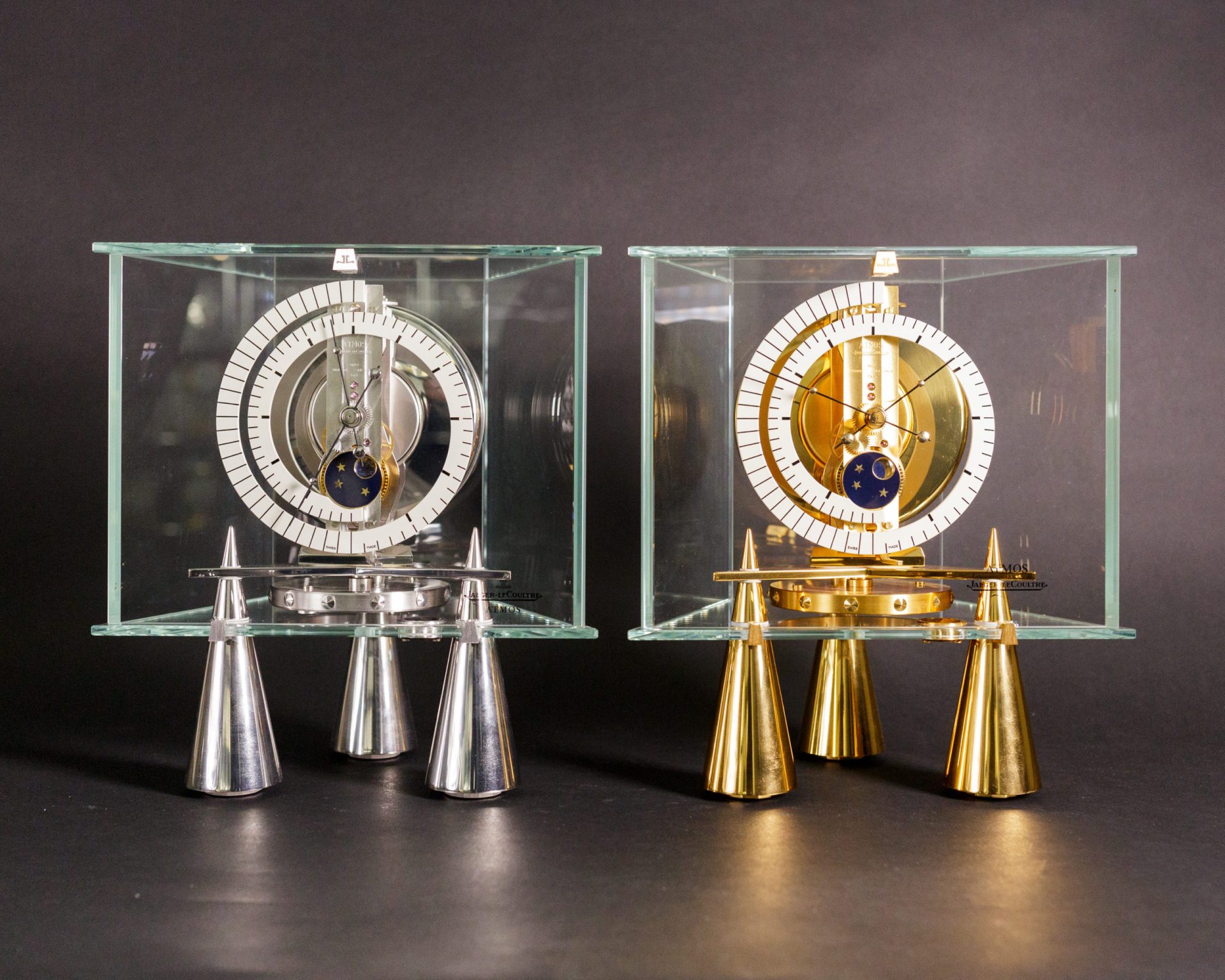
Special models
In addition to various case variations, different design variations have managed to get a special place. Different variants such as the Atmos Opera or the Atmos Fontainebleau in a wooden case are issued and cause a sensation. First and foremost, the Atmos Atlantis/3000, designed in 1995 by the designer KOHLER et REKOW in Paris, was the trendsetting design that carries the Atmos watch in a glass trapeze on 3 large pointed metal cones. Different versions, in gold or rhodium plated, were produced in small numbers. A masterpiece of technology and almost unique in watch history is the “Atmos Atlantis du Millenaire“ which is equipped with a perpetual moon, month, and year calendar. A snail-shaped dial with a separate hand movement shows the years from 2000 AD to 3000 AD. A watch that carries the thought “until all eternity“.There are also special editions of this variant, such as the Atmos du Millenaire Marqueterie (caliber 546). A luxuriously handcrafted walnut case with intricate inlay work underscores the special nature of this watch.

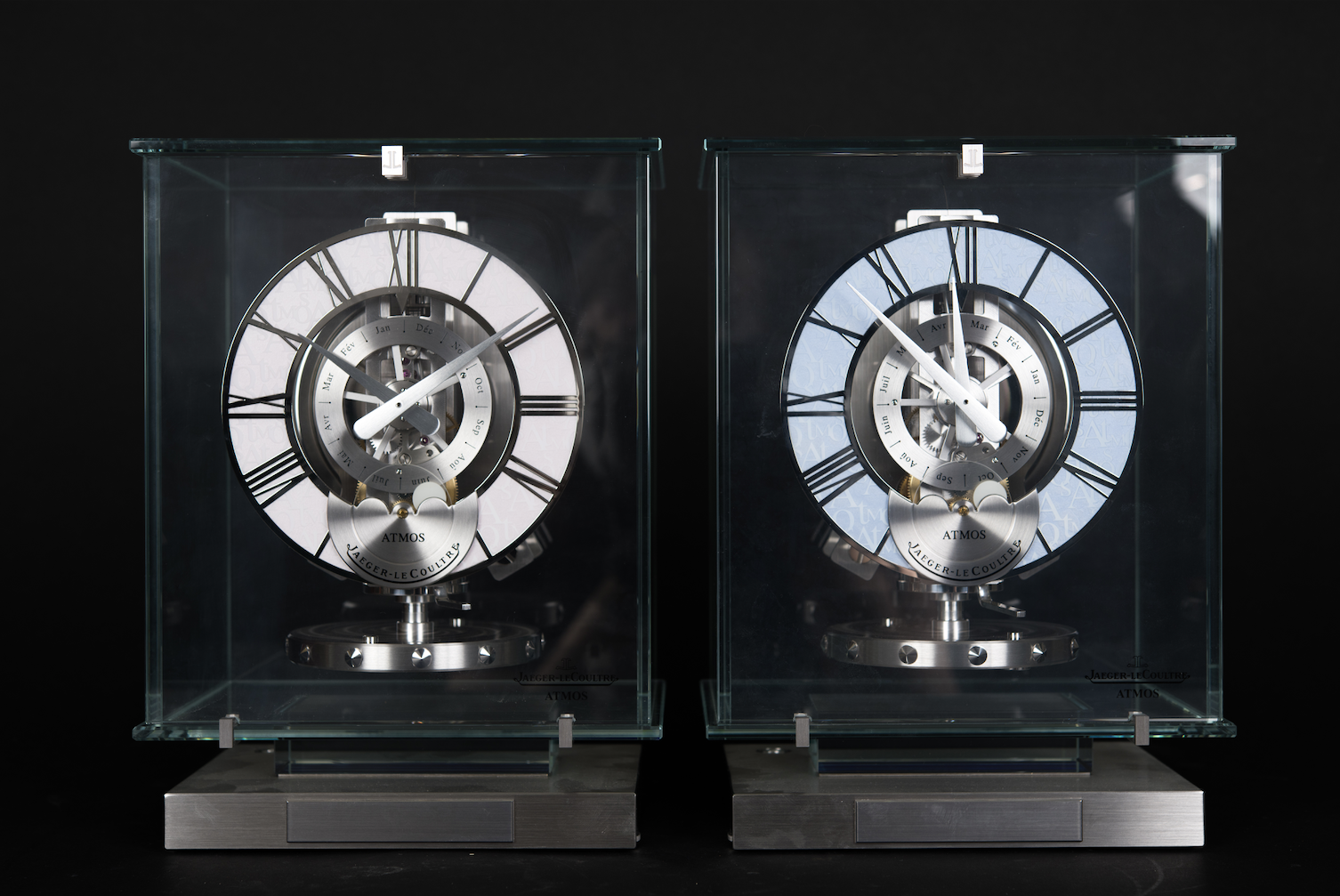
Special variants
Here, too, special model variations were created. Particularly noteworthy, for example, is the model Atmos Transparente, in which the Atmos clock is suspended in a glass cube. This model was produced in different versions, without/with moon phase display, even in a “du Millenaire“ variant—with a 1,000-year calendar page.



